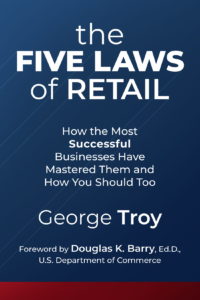Marking Down—Driving a Higher Turn by Throwing Things Away
Driving a higher turn also means taking mark-downs—writing stock out of stock. In a fruit stand, that means throwing the old produce away. It might seem counter-intuitive to throw things away in order to sell more, but it is not. You want people to buy your stuff, and it has to look right in order to be attractive. You must turn your physical inventory into money so that you can buy more (and better) inventory.
All businesses try very hard to get this right, using expensive software models for reorders and employing lots of people to constantly evaluate and adjust inventory levels.
I once was hired to advise a company that sold ski equipment and apparel—everything you’d need for skiing, snowboarding, the whole range of outdoorwinter-sports: skis, boards, parkas, boots, dark glasses, snow pants, gloves, everything. It is a very risky and difficult category of business. The purchase mark-ups on the equipment are low—usually, 50% or lower. That is, they’d have to pay, say, $100 for an item that they could not retail for more than $200. Also, the season is short (just a few winter months). And on top of that, if it doesn’t snow, no one wants to buy any ski equipment or clothing at all, at any price.
This was a privately held company, and the guy who owned it had been very successful and made lots of money back in the 1970s, when skiing was really getting broadly popular. Back then, the demand was so high and the available product so limited that just about everything sold, and sold quickly. Part of the formula for making a lot of sales and profit was to hold product over until the next year and buy more at the end of the season at a discounted cost, then sell it for the next season.
This worked well while the demand was high and supply was limited. The turnover rate was actually pretty good. But then things changed. The supply grew (more and more companies were getting into the business), and the demand softened a bit. Most importantly, the customers became more demanding and sophisticated. They didn’t want last year’s parkas or gloves; they wanted the newest colors or technology. Without noticing it, the turn slowed a great deal. Sales fell off, old inventory grew, and profitability fell.
What had happened? The company had broken all Five Laws, or in some way violated or disregarded them. It lost sight of The Third Law, “It’s Always the Product.” It did not honor The Fifth Law, “Protect Your Downside.” In terms of pricing, it viewed cost of supplies and production as more important than what was appropriate for that retail market, thus violating The Fourth Law, “It’s About the Retail Price, Not the Cost.” And it did not listen to the customer as an important part of the community, thereby ignoring The First Law, “People First.”
This is an excerpt from my upcoming book.
















This is very true. In the thrift store I worked at this was the biggest crux of our problem. The owner did not want to get rid of the old inventory and as a result the old inventory took up space and there was no room for the new inventory. This brought sales down since customers wanted what was new. As you said when you lose sight of The Five Laws it can make it difficult to keep a successful business. As always great blogs!